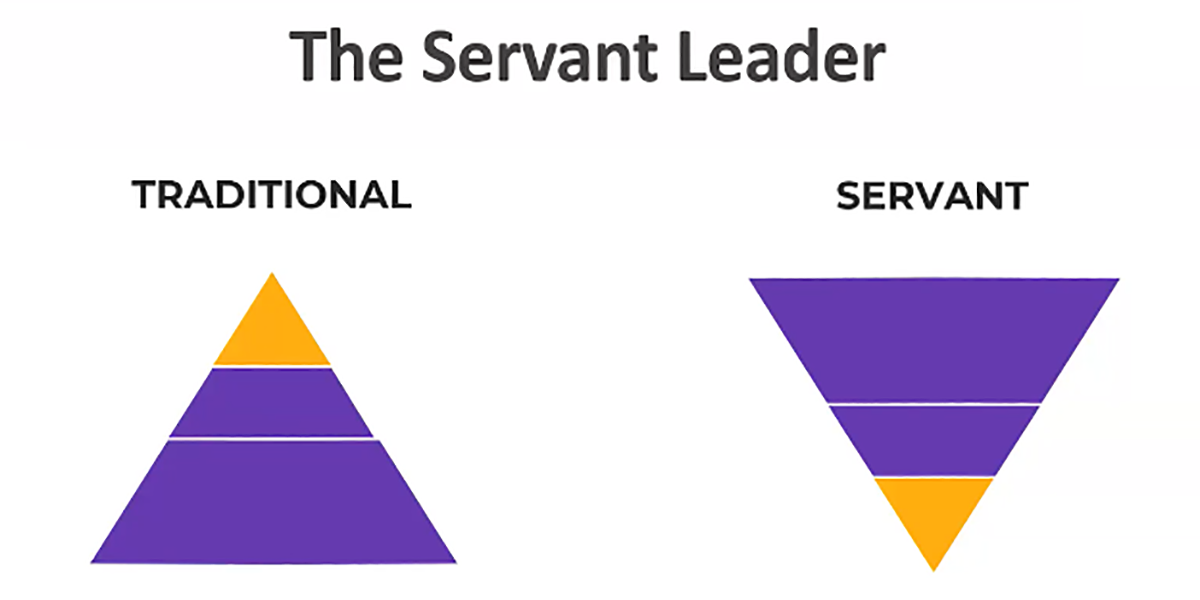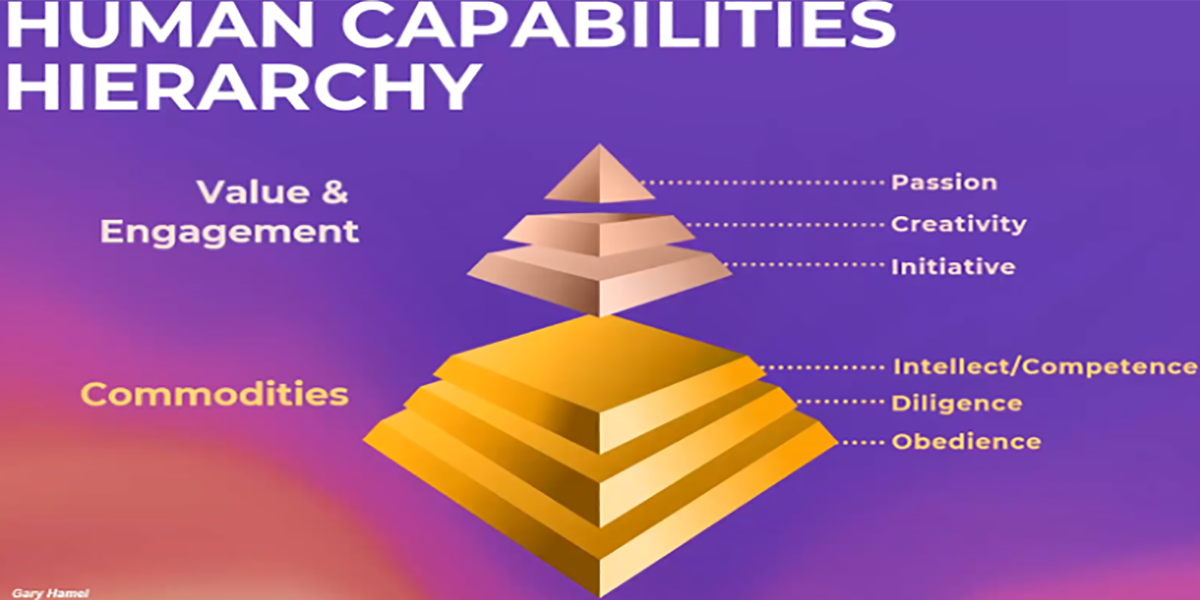03 May at 07:00AM
Deconstructing Agile Servant Leadership

Do you know Servant Leadership well? Are you familiar with Agile Servant Leadership? PMI Toronto’s new Agile community hosted their first event covering everything related to Agile Servant Leadership. The event’s charismatic guest speaker, Nadya Ichinomiya, an Executive Director at Sony Pictures, discussed her experience introducing Servant Leadership at Sony by way of the launch of the Agile Center of Excellence in July 2020. This rapidly drew interest and hundreds of employees have now taken the courses since it’s inception. PMIT’s Agile Community Chair, Cristiane Xavier hosted this interactive and memorable session.
What is the Agile Centre of Excellence at Sony?
Nadya leads the Agile Centre of Excellence at Sony. In less than two years more than 1000 participants (out of 6000 total employees) have taken their optional two-hour Agile Servant Leadership course so far.
Furthermore, Sony’s Agile CoE runs a program called “Circles”, a 10-month program where people are intentionally grouped in cohorts with other employees from diverse teams to enable peer learning and feedback. Earlier this year they’ve started their ninth cohort. Nadya offers insights into how these programs at Sony has trained Toronto-based Project Managers.
Defining Servant Leadership
Servant leadership is an inversion of the traditional company org chart you might be familiar with. Typically, front-line workers form the base of most businesses, then a layer of management sits above that, giving direction and running projects. At the top sits the leadership group. Servant leadership is the opposite, where leadership is positioned at the bottom of the pyramid, and works to serve the people in their organization.

Servant leadership is characterized in two ways:
- Leaders have shifted their mindset to serve others first
- Practices that empower people to grow with passion, creativity, and winning performances
Benefits of Servant Leadership
The servant-leader approach strengthens teams or employees by encouraging deeper engagement, which can lead to higher motivation and better morale. Leaders also benefit greatly from this approach.
Speaking about personal career development, the servant-leader approach will increase your leadership muscles, as you learn more about the strategic, forward-thinking impact that you can have on your teams.
Servant-Leadership in Action
Nadya shared an incredible example of one leader who successfully moved from traditional leadership to a servant-leader model in the US Navy.
Taking last-minute command of a submarine, the captain initially gave orders to the crew, but they couldn’t physically or practically follow them. The captain quickly realized he was giving orders based on his in-depth training for a different type of submarine.
However, since he was the captain, and the Navy followed the traditional “Know-all, tell-all” leadership approach at that time, his crew repeated and unsuccessfully tried to implement his orders. He quickly pivoted to an empowering approach called “intent-based leadership.” In this approach, everything is based around the concept of “I intend to….”
The new approach meant he stopped giving orders. Instead, he started asking his team to tell him what they intended to do in any given situation. Furthermore, he empowered his team by giving them control over their actions, and by moving authority over decisions to where the information was given. This developed ownership of decision making among all the members of the organization.
In this intent-based environment, people felt more valued and a part of the team. They were able to understand the organization’s goals and how they individually contributed toward those goals, while having some control and decision-making authority.
The success or progress of the team becomes the goal for everyone, not simply the leaders.
Sony’s Agile Servant Leadership program applies this lesson by having people start their sentences with “I intend to…” Although change doesn’t happen overnight, intent and language are key principles in adjusting how an organization will behave.
Skills that Servant Leaders Need to Develop in Teams
To take your organization to the next level, innovation is important. While servant-leadership may revolve around the leader of an organization, the best organizations are often comprised of high-performing teams. Whether hiring externally or from another department, often we will integrate new members in our teams.
While we would always test for competence and hard skills, how do you recognize and get the best out of your people? By starting with some key soft skills that enable top performance.
Patrick Lencioni’s Ideal Team Player, describes the three assets each employee should have for an agile and highly-performing team to thrive. They should be:
- Humble
- Hungry
- People Smart
In Gary Hamel’s What Matters Now, he explains that companies rely on people who have strong skills in the bottom three commodities to function and carry out day-to-day business tasks, but the top three values are where innovation and new ideas shine.

Having leaders who can express these ideals or encourage their teams to display passion or creativity are prone to develop new ideas, products, and wins for the business.
Servant Leaders and Influence
Another aspect that Nadya pointed out was the power of influence that leaders hold. Depending on their style, if you’ve ever worked for a micro-manager, you will understand the feeling of being uninspired, or “going through the motions.” On the other hand, an inspirational leader will encourage you to be creative, run with your ideas, or take accountability with you.
“Leaders are either Multipliers or Dimishers. Multipliers give people space and freedom to make mistakes. They remove fear from an organization.”
—Liz Wiseman
In Liz Wiseman’s Multipliers: How the Best Leaders Make Everyone Smarter, she introduced the five disciplines of a multiplier. Nadya provided practical exercises that we can all take back to our teams.
The five Disciplines of a Multiplier are:
- Talent Magnet vs Empire Builder—Attract and optimize talent.
- Liberator vs Tyrant Create intensity that requires the best thinking.
- Challenger vs. Know-it-all—Extend challenges and ensure direction gets set, rather than set direction themselves.
- Debate Makers vs Decision Maker—Debate decisions and issues upfront and ensure they don’t leave their organization in the dark.
- Investor vs Micromanager—Delegate ownership and accountability.
Many leaders will be familiar with setting challenges to their teams, but major goals, without clear steps from A to Z, such as JFK’s famous speech challenging NASA to land a man on the moon within 10 years can stretch teams to go beyond what is possible.
A decision-maker boss is someone who will tell you “We will do A, then B, then C” instructively. The opposite is asking team members to vote on e.g., “what should we eat for lunch today?” and letting each person have their say, or feel included in the decision.
Lastly, understanding the differences on a project between being an investor (e.g., providing funding, political support with leadership, stakeholder engagement etc.) versus a micromanager who insists on doing every task by themselves. Which type of leader is more inspiring to you?
As you grow your servant leader muscles, your team will become independent, inspired, and high achievers. Servant leaders no longer win recognition for their accomplishments, but rather are recognized for what they have enabled others to achieve.
Concluding Thoughts
Nadya reminds us about the importance of psychological safety in organizations. This created a safe environment for anyone who wants to speak up or discuss such things as new ideas, mistakes, concerns, or questions.
Organizations that don’t encourage this type of discussion are not Agile. Remember, Agile means failing fast to succeed sooner. At Sony, Nadya and her trainers work with different teams to develop psychological safety. The best servant leaders create psychologically safe workplaces where intellectual friction is high, people can share ideas and concerns, and work towards successful actions, projects, and ideas.
Want to Know More about Agile?
Don’t miss PMIT’s Agile Community’s next event. On June 8 join us for, Choosing the Right Agile Process for Your Culture and Goals. Scott Dunn of Rocket Nine Solutions will explain how you can plot not only what approach (such as SAFe, Disciplined Agile, or other framework) fits your company culture but also point the direction of where we need to go.




